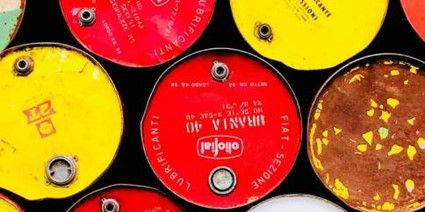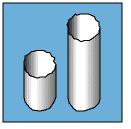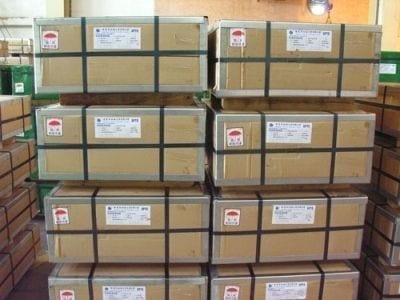Dangerous goods or IMO are products that pose a risk to health, the environment or property, such as flammable liquids, explosives or certain toxic substances. In order to maintain maximum safety, the transport of dangerous goods is governed by certain regulations that apply worldwide. In the following post we tell you in detail the classification of dangerous goods.
Precisely the transport of dangerous goods requires a prior packaging process carried out under the regulatory regulations that classify this type of packaging. The range of goods can go from 60,000 to 200,000 different objects and substances. If this is not done correctly, the product may be refused or retained at the place of destination, causing economic losses for the companies in charge of its commercialization.
What do we mean by dangerous goods packaging?
Dangerous goods packaging is any article or substance which, when transported by air, rail or sea, may constitute a significant risk to health, property, safety or the environment.
Packaging made of cardboard, plastic or metal can be classified as approved packaging for the transport of dangerous goods, as long as it complies with the test certificates that guarantee its resistance and safety. In addition, these may be combined with primary packaging systems for the protection of the products and must be correctly labelled on the outside.
Examples of dangerous goods that we use on a daily basis can be paint, varnish, family members. This can give us an idea of the magnitude of accidents that can be caused by the transport of dangerous goods in large volumes and the importance of regulatory codes relating to the different means of transport and safety for the environment and human life.
It is vital to carry out a correct classification and identification of them, otherwise the shipper or transporter will not be able to carry out any action with the material. Classification, followed by identification of the substance by a name and a number, are vital for further processing.
UN System
Maritime and air transport modes, until the late 1970s, had their own classification system independent of road and rail with very few similarities between them. In 1954, the UN, recognizing this problem, approved through its Economic Council a resolution establishing the creation of a Committee to draw up a set of standard rules for the transport of dangerous goods valid for all modes of transport. Today it is known as the Committee of Experts on the Transport of Dangerous Goods and on the Globally Harmonized System of Classification and Labelling.
Dangerous goods may be in the form of raw materials, i.e. having been extracted directly from a point with the intention of being further processed at the destination. They can also be in the form of end products, in which case they must be transported from the place of manufacture to the point of sale; this is the case with lithium batteries, or flammable liquids – such as fuel – among others.
The transport and packaging of all these products is prohibited, both nationally and internationally, unless they have the necessary approval processes to ensure the safety of the goods at all times.
When transporting dangerous goods, it is mandatory that they are identified with a specific label that must be in a visible place. This label, in the shape of a diamond, incorporates the number of the classification made by the UN. Thus, if we find a truck with a diamond-shaped label with the number 3, we will know that it is transporting flammable liquids.
In the terrestrial case, the label will be placed on the rear of the vehicle and also on the sides. In the case of transport by air and sea, it is the containers that must be marked with this label.
Dangerous goods packaging regulations

Packaging systems for dangerous goods are regulated according to ADR-RID, IMDG, IATA-OACI regulations. These systems refer to the regulation of the transport of dangerous goods according to their route – road, sea and air – at national and international level. Thus, we know that each of them refers to the following:
ADR: This is the European Agreement concerning the International Carriage of Dangerous Goods by Road.
RID: The Regulations concerning the International Carriage of Dangerous Goods by Rail.
IMDG: Refers to the International Maritime Dangerous Goods Code.
IATA: It is the International Air Transport Association that regulates air traffic worldwide.
ICAO: The International Civil Aviation Organization is the advisory body to the United Nations on International Civil Aviation.
Classification of dangerous goods
According to ADR regulations, 13 categories are established to classify dangerous goods according to the type of product.
Class 1: Explosive substances and articles
Class 2: Gases
Class 3: Flammable liquids
Class 4.1: Solid flammable substances, self-reactive substances and solid desensitized explosive substances
Class 4.2: Substances liable to spontaneous ignition
Class 4.3: Substances which in contact with water give off flammable gases.
Class 5.1: Oxidizing materials
Class 5.2: Organic Peroxides
Class 6.1: Toxic Substances
Class 6.2: Infectious materials
Class 7: Radioactive Matter
Class 8: Corrosive Materials
Class 9: Miscellaneous hazardous materials and articles
On the other hand, these will be grouped into 3 other sets according to their level of risk. Thus, we will make the following classification:
Packing group I: Highly hazardous materials
Packing group II: Substances presenting medium hazards
Packing group III: Substances presenting a lesser degree of danger
It is worth mentioning that the level of risk will vary according to the dangerousness of the goods and not according to the type of product. In other words, explosive substances and articles – class 1 – can be classified in packing group I, II or III, depending, for example, on whether they can produce a mass explosion when transported, in which case they would be more dangerous.
Labelling of dangerous goods packaging
According to international agreements the packaging must be of a design type, certified by a competent national unit. On the outside of the packaging intended for the containment of dangerous goods, a reference to the type of packaging used – 4G boxes or 4GV boxes, for example -, its characteristics, weight and state of the material it contains, as well as the year of classification of the container, must be distinguished. This information will appear inside the approval password.
On the other hand, the packaging must have the UN number, which identifies the material from four digits, each product has an identifier code that links it to its class, corresponding label and hazard identification number.
In addition, approved cartons should have a handling mark indicating the orientation of the container during the transport and handling process. Finally, the regulation establishes that, in order to facilitate the work of the transporter and to establish an international communication code that allows to know which product the box contains, each packaging for dangerous goods will have on its exterior a visual distinctive following this labelling system.
Packaging symbol
The symbol means that a package has been tested and passed performance tests. There are several types of packaging combined along with several different materials from which they are constructed.
Types of packaging:
- Drums/Hubs
- Barrels
- Jerrican
- Box
- Bag
- Composite packaging

There can be a combination of number and letter for example:
4D: plywood case & box
2D: plywood barrel
1 A 1 : steel drum with non-removable head
4GV: wood fibre box variation II Packing.
Dangerous goods Class 1: explosive substances and articles
Various types of goods are classified here, always related to the risk of explosion. For example, here we can find fireworks, rockets, detonators and other pyrotechnic products.
There is a subdivision of explosive materials:
1.1. Substances and objects with a mass explosion hazard.
1.2. Substances and objects with a projection hazard, but not a mass explosion hazard.
1.3. Substances and articles with a risk of light fire, blast or projection effects, but without risk of mass explosion.
The label for these first three subcategories of dangerous goods has an icon of an exploding bomb and a number 1 at the bottom:

1.4. Substances and objects with a small risk of explosion in case of fire. The explosion is restricted to lumps and does not cause a projection of elements.
1.5. Substances and objects very insensitive to mass explosion under normal conditions of transport.
1.6. Objects extremely insensitive to an explosion.
The labels of these other three subdivisions indicate the number of each type (1.4.; 1.5.; 1.6.) next to the number 1 at the bottom:

Dangerous goods class 2: gases
Gases can be found liquefied, compressed or refrigerated. In turn, they are classified as asphyxiating, oxidizing, flammable or toxic gases. There are 3 subdivisions, although the labels always include the number 2 at the bottom:
2.1. Gases flammable on contact with heat, e.g. butane. The label shows the symbol of a flame (black or white) on red.

2.2. Non-flammable, non-toxic gases. They produce asphyxiation by substituting oxygen and, in addition, they have oxidising characteristics (they favour combustion more than normal air). For example, we mentioned helium.

The label consists of a canister in black or white on green.
2.3. Toxic gases. Breathing them in can cause serious harm or even death. In addition, they can promote combustion, be flammable and corrosive. An example of such a gas is chlorine.

Dangerous goods class 3: flammable liquids
This class includes flammable and explosive liquids and insensitive liquids such as gasoline, turpentine or paint. The label shares the flame symbol, but differs from Class 2 by incorporating the number 3 in the lower corner.

Class 4 dangerous goods: flammable solids, substances which can spontaneously combust, substances which in contact with water can catch fire.
There are three subcategories, although the number 4 must always appear on the labels:
4.1. Flammable solids: these are solids that under normal transport conditions are flammable and friction can trigger fires.

The label bears the flame symbol in black on a background of red and white vertical stripes.
4.2. Substances which may undergo spontaneous combustion when heated in contact with air or during transport. As an example we can mention coal.

In this case, the label is divided into a white background in the upper half and a red background in the lower half. It shows a black flame on white.
Dangerous goods label class 4.2. Substances that can undergo spontaneous combustion
4.3. Substances that can ignite in contact with water, e.g. sodium or potassium. The label differs from the previous ones in that it has a blue background.

- Dangerous goods class 5: oxidising substances and organic peroxides
In this case there are two subcategories:
5.1. Oxidizing substances
These liquids or solids promote combustion, so contact with other materials can lead to fires.
The associated label bears the flame symbol on a circle. The background color is yellow and has the number 5.1 at the bottom.

5.2. Organic Peroxides
They are derivatives of hydrogen peroxide. These substances are extremely hazardous and only certain quantities can be included in a unit load.
The label they must carry displays a white or black flame on a half red and half yellow background. It is numbered 5.2.

Dangerous goods class 6: toxic and infectious materials
6.1. Toxic Substances
May cause death if swallowed, in contact with skin or inhaled.
The label shows the skull symbol in black on white. It has the number 6 on it.

Dangerous goods label class 6 Toxic substances
6.2. Infectious substances
In this case, the dangerous goods contain microorganisms that can cause disease. The label must contain the symbol of three superimposed moons on a black circle and white background. In addition, they have the message that they are “infectious substances” and the warning that “in case of damage, spillage or leakage, it is necessary to notify the health authorities”.

Dangerous goods class 7: radioactive substances
These dangerous goods contain radioactive elements such as uranium or plutonium. There are three categories of this type depending on their radiation level and one dedicated to fissile material.
The labels of the first three categories (I, II and III) show the radioactive trefoil symbol and display data regarding content, quantity and activity for which they are intended.
Category II and III indicate a higher hazard and share the yellow background colour in the upper half.

Dangerous goods label class 7 radioactive elements I, II, III
The label of fissile material is white and must include the legend: “fissile” in black. At the bottom it should show the “Critical Care Index” and the number 7.

Dangerous goods class 8: corrosive substances
This type of material damages the skin when it comes into contact with it. They can also cause poisoning by inhalation or ingestion. An example is found in substances such as sulphuric acid or sodium hypochlorite.
The label features the symbol of two test tubes pouring their contents onto a surface and onto a hand. The background of the upper part is white in front of the figure in black. The bottom is black and has the word “corrosive” and the number 8 on it.

Dangerous goods class 9: substances presenting various hazards
These materials present some type of risk that is not included in the previous sections. This includes, for example, dry ice, which is used to cool various products.
The label of this section has black and white vertical stripes in the upper half and, in the lower half, the number 9 appears on a white background.

Finally, we have to mention that all these labels must have a rhombus shape and dimensions of at least 100 x 100 mm.
Consequences of incorrect labelling or packaging
The importance of labelling this type of product is vital as it can lead to the refusal of entry of the goods, as well as an additional penalty that will increase the losses in addition to the prohibition or seizure of the article. That is why it is vital that the product to be transported has a correct classification and labelling, as well as the information on it appearing in a visible area of the packaging.
Also during the palletisation of the box, extreme care must be taken in handling and preservation, choosing a type of pallet with four entries, which is not overloaded and distributing the load evenly in correctly structured stacks protected by a film.
Finally, it is important that the boxes containing the product are in perfect condition and do not leave any free space between the product and the side walls of the packaging. It will be vital to condition the inside of the box to comply with all the guarantees, either with rigid or flexible interiors or vermiculite to separate the items in the event that there are several units or simply to ensure that they are secured to prevent spillage, which could cause damage to operators and the environment.













I want the copy of this document, so how can I get it?